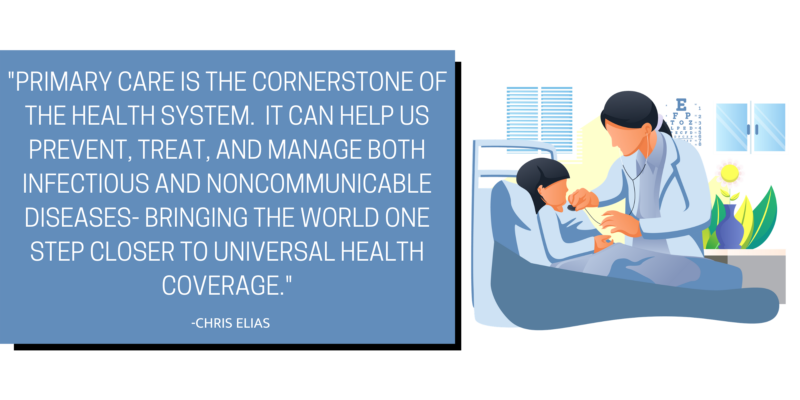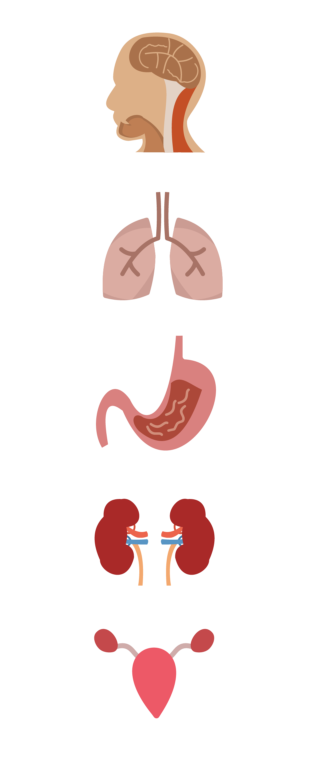These days, medical choices can be overwhelming. The medical technologies, insurance plans, treatment philosophies, and healthcare settings available are widely varied. Learning what your needs are, determining your options, and making the right medical decision can take a lot of time and effort. Fortunately, choosing between a doctor of internal medicine vs. general practice vs. family medicine is actually relatively straightforward.

Each of these doctors is qualified to provide your primary care, so there’s really no wrong answer here. That said, you should put some thought into which you choose, since there are some key differences between a doctor of internal medicine vs. general practice vs. family medicine. Knowing what those differences are, and how they apply to your health care, can make your decision process an easy one.
What is a Primary Care Doctor?
As we’ve briefly noted, doctors of internal medicine, general practitioners, and doctors of family medicine are all primary care physicians. This means that they provide routine care, make referrals to specialists, and serve as the “hub” of your medical team. They are familiar with a wide range of medical conditions, and patient demographics. A primary care physician’s duties include:
- performing annual checkups
- setting up routine screenings like mammograms and colonoscopies
- administering vaccinations
- monitoring health changes over time
- making referrals as needed
- screening for behavioral health issues
- treating routine illnesses and injuries
If you’re like many of today’s busy patients, you may turn to urgent care for most of your day-to-day medical concerns. Urgent care centers are a convenient resource for a quick fix when you have a straightforward and pressing medical problem such as a UTI or sprained ankle. But it’s not a good idea to rely on urgent care alone, and skip finding a primary care physician. As the Commonwealth Fund reports, adults with a primary care physician spend an average of 33% less on health care than those without. Having a primary care physician can even be life-saving; the same source states that adults in the US with a primary care physician have 19% lower odds of dying prematurely. In short, when it comes to whether or not to find a primary care doctor, the choice is obvious. The real decision you’ll need to make is whether to choose a doctor of internal medicine vs. general practice vs. family medicine.

What is a Doctor of Internal Medicine?

Doctors of Internal Medicine are sometimes also called “general internists,” “internists,” and “internal medicine physicians.” People sometimes get “internist” and “intern” confused, but an intern is actually a doctor working on their residency training. Doctors of internal medicine work to diagnose, treat and care for adult patients across the full health spectrum, from wellness to complex illness. Because they frequently treat people with severe or complex health conditions, many internists work in hospital settings.
Doctors of internal medicine are different from doctors of family medicine or general medicine because they work specifically with adults and focus managing on health conditions. People who have or are at risk for chronic health conditions should opt for a doctor of internal medicine as their primary care provider. Some of the conditions these doctors typically diagnose, treat, and manage include:
- heart disease
- asthma
- hypertension
- osteoporosis
- arthritis
- diabetes
- fibromyalgia
- obesity
What is a General Practitioner?

General Practice physicians are also called general practitioners or just “GPs.” Like doctors of internal medicine, these physicians provide routine care for both chronic and acute illnesses and also provide preventive care. But unlike doctors of internal medicine, general practitioners treat patients of all ages and genders. This category of doctor also includes osteopaths, doctors who practice osteopathy, a form of alternative medicine that focuses on the skeletal and muscular systems. General practitioners are trained to provide holistic care, meaning that they focus on:
- physiological health
- psychological well being
- social factors relevant to patient care
Because a general practitioner sees patients of all ages, you have the potential to see the same general practice doctor when you’re 13 and 23, which can be great for continuity of care. A general practice doctor is also a good choice if your healthcare needs are fairly straightforward. In general, this classification of primary care physician has been declining in the United States as more new professionals enter the higher-paying fields of family medicine and internal medicine. The US Agency for Healthcare Research and Quality found that as of 2010, there were 71,487 doctors of internal medicine practicing as primary care physicians and 79,831 doctors of family medicine, with only 9,557 general physicians serving as general practitioners.
What is a Doctor of Family Medicine?
Just as the name suggests, doctors of family medicine are generalists with one specific focus: families. Like general practice doctors, doctors of family medicine see patients of all ages. They are qualified to treat newborns, great-grandparents, and everyone in between. When the whole family can be seen by a single doctor, it’s easier to keep track of everyone’s medical history, develop a longstanding doctor-patient relationship, and continue seeing the same person when transitioning from childhood to adulthood. Although both general practitioners and family medical doctors treat people across the lifespan, a doctor of family medicine has also completed a medical residency in family medicine of 3-4 years.
A doctor of family medicine is a good choice if you would like all your family members to have the convenience of seeing the same person and develop a long-term doctor/patient relationship. A doctor of family medicine is also a great choice for monitoring for and managing conditions that are often shared by multiple family members. These may include conditions such as:
- asthma
- diabetes
- eczema
- insomnia
- heart disease
- ADHD
- allergies
- mood disorders
- obesity
- inflammatory bowel syndrome (IBS)
In addition to treating children and adults, family medicine physicians have training in obstetrics, the care of pregnant women. They also have training in adolescent medicine and in geriatrics, the care of elderly patients. It’s worth noting that you do not need to be a parent in order to see a doctor of family medicine as your primary care physician.
Choosing Between a Doctor of Internal Medicine vs. General Practice vs. Family Medicine
As we’ve noted, having a primary care physician is associated with better health outcomes and lower health spending. If you care about protecting your health and your finances, you’ll need to have a primary care physician. But which type should you choose: a doctor of internal medicine vs. general practice vs. family medicine- and does it make a difference?
Because the number of general practitioners is much lower than the number of other primary care physicians, most people will find themselves choosing between a doctor of internal medicine and a doctor of family medicine. Each of these types of doctor is capable of diagnosing medical conditions, providing treatment, and making referrals. Your age, gender, health conditions, and personal preferences will determine which type makes the most sense for you.
Choose a general practitioner if you:- Have relatively straightforward medical needs
- Are looking for a doctor of osteopathic medicine
- Would like to see a physician with an integrative, holistic approach
- Prioritize continuity of care over the long term
- Have no family members under 18 that you’d like seen by your doctor
- Have a chronic, complex or serious medical condition
- Are at high risk for developing an illness or medical issue
- Would like to see a doctor in a hospital setting
- Have family members under the age of 18 -Would like to bring your children or other relatives to the same medical practice
- Share a medical condition with your family that you’d like monitored by the same physician
- Would like your primary care physician to handle your routine obstetric and gynecological care
- Would like to see a doctor in a private practice or clinic setting
Ultimately, the type of primary care provider you choose is usually less important than the quality of your doctor/patient relationship. You’ll want to have a doctor whose expertise you trust, whose practice is convenient enough for you to see regularly, and with whom you can freely bring up sensitive medical questions. In choosing between a doctor of internal medicine vs. general practice vs. family medicine, it makes sense to keep your options open and seek out a person with whom you have a good rapport.
